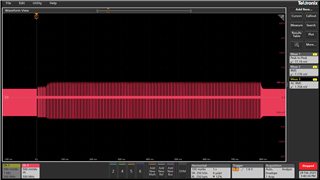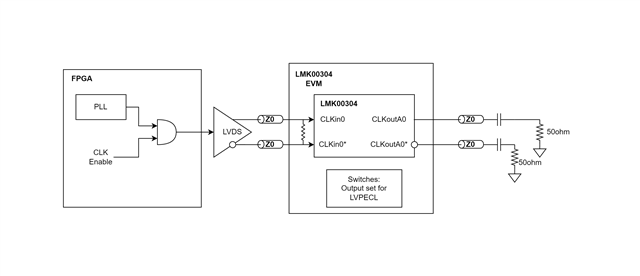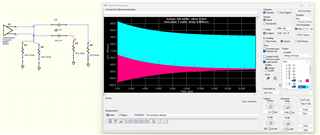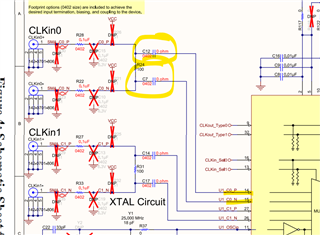Other Parts Discussed in Thread: LMK00304
Tool/software:
Hi,
I'm using the LMK00304EVM for buffering a digital clock, before filtering to use as an RF tone.
We need to be able to turn the source on and off, sometimes fairly rapidly.
What I'm observing is that the amplitude gets higher when the clock input is turned off/on rapidly.

Shown above is an LVPECL output, terminated to two 50 ohm resistors.
It takes nearly 10mSec for the output to settle back on steady-state.
Technically this doesn't violate anything I'm seeing in the datasheet, but also, this doesn't seem like expected behavior to me.






